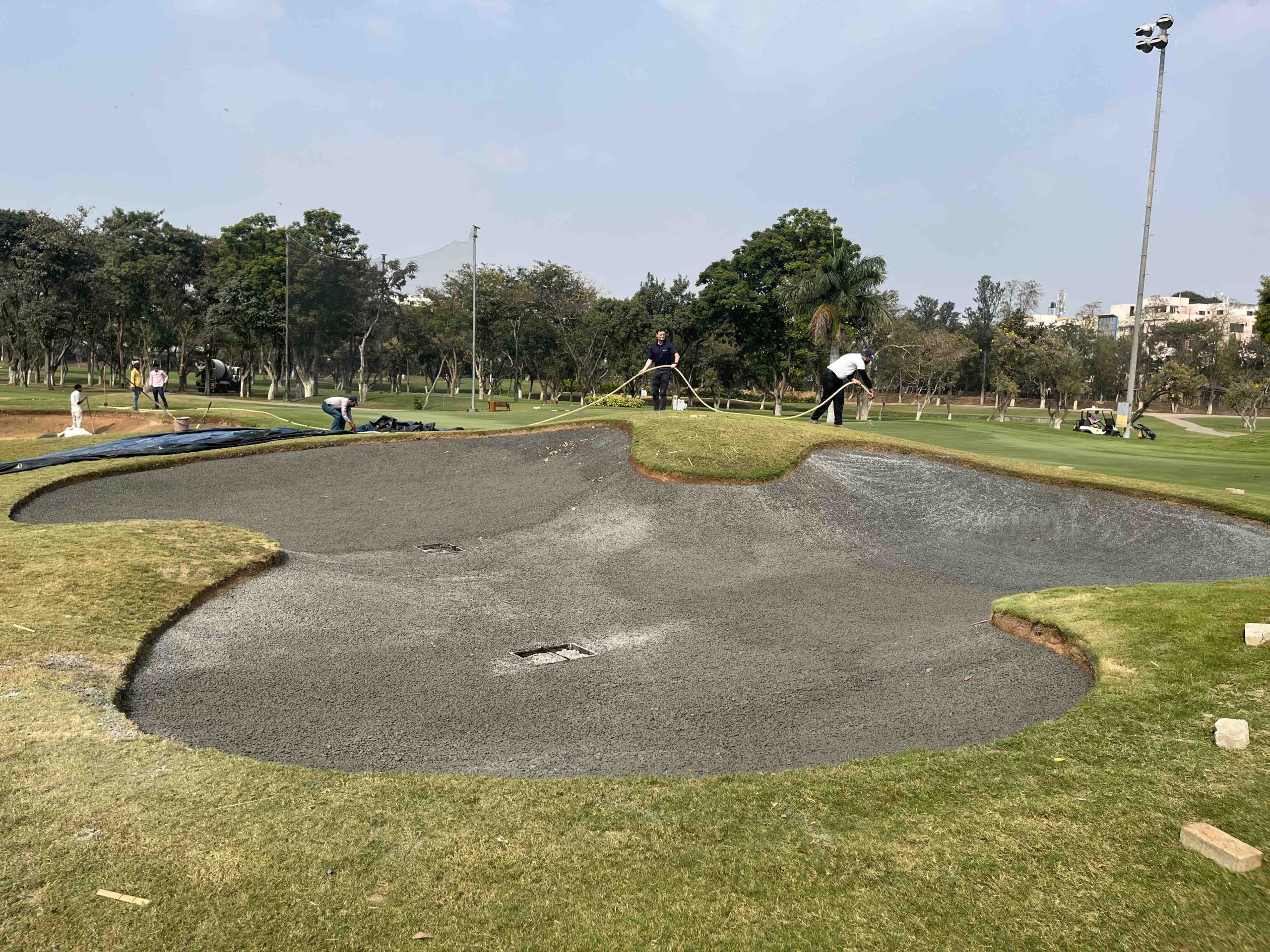India’s first full Capillary Bunkers installation is currently underway at the Karnataka Golf Association Club in Bangalore. And the club is expecting a quantum improvement in bunker performance as a result of its investment.
The KGA course is built on a tight, 124-acre site in the Kodihalli district of Bangalore, right next to the city’s former international airport. The site is a former lake bed, and thus drains the locality, especially during the monsoon season, which runs from June-October.
The course, which was originally built by Thomson and Wolveridge, used to suffer badly during the monsoon, but since it was rebuilt in 2008 by Howard Swan, it has never closed due to flooding. However, the bunkers still struggle to cope with monsoon rains.
“In the monsoon, the bunkers can be out of play for days at a time,” says course superintendent Coman Mulry. “They don’t really have sand in them any more – it is more a mixture of sand and silt. During the last monsoon season, we had just over 1,200mm (48 inches) of rain – which is good for recharging the region’s aquifers, but not so good for golf!”

After consulting with SGDC India, the country’s leading golf construction and irrigation firm, KGA decided to upgrade all its bunkers using the Capillary Bunkers product.
“We have been used to using geotextile liners in Indian golf, formerly quite basic ones and more recently better quality, higher GSM products,” says SGDC India chief executive Anit Mehotra. “But eventually they go bad, and the sand mixes with the underlying soil, becoming contaminated and hard. We were changing sand in bunkers – or topping it up at least – after two or three years. But then I met Capillary Bunkers inventor and CEO Martin Sternberg, and I realised that his product could be the answer. Yes, it is more expensive up front, but you don’t have to change the sand so frequently, so you save a lot of money over time. KGA is the first club in India to install the product, but we are now doing two other courses, both in Delhi.”
“The course is incredibly busy,” says Mulry. “The club has almost 4,500 members, of whom about 1,800 are active golfers, and we have 250-300 players every day. That makes doing course work something of a challenge, but we have been able to close a hole at a time while we are pouring the concrete – which we started doing at the beginning of February, and we hope to be done by April 1. It helps that installing Capillary Bunkers is very easy. A lot of our bunkers are quite steeply flashed, and the product holds very well on the slopes.”

